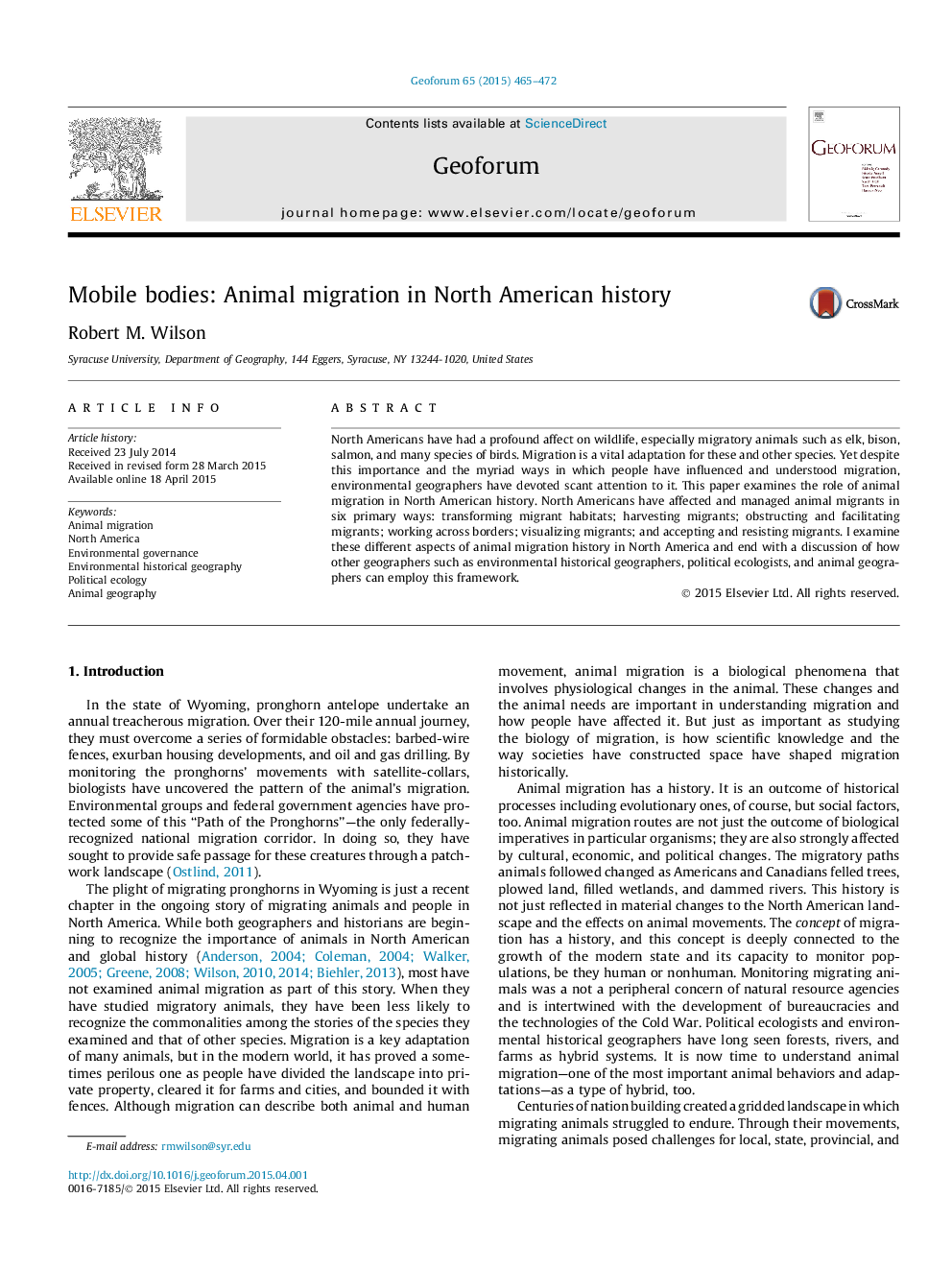| Article ID | Journal | Published Year | Pages | File Type |
|---|---|---|---|---|
| 5073839 | Geoforum | 2015 | 8 Pages |
â¢Environmental geographers have failed to study animal migration.â¢But social factors have strongly affected animal migration patterns.â¢Animal migration is increasingly a byproduct of social and natural processes.â¢These new migration patterns are emblematic of the Anthropocene.
North Americans have had a profound affect on wildlife, especially migratory animals such as elk, bison, salmon, and many species of birds. Migration is a vital adaptation for these and other species. Yet despite this importance and the myriad ways in which people have influenced and understood migration, environmental geographers have devoted scant attention to it. This paper examines the role of animal migration in North American history. North Americans have affected and managed animal migrants in six primary ways: transforming migrant habitats; harvesting migrants; obstructing and facilitating migrants; working across borders; visualizing migrants; and accepting and resisting migrants. I examine these different aspects of animal migration history in North America and end with a discussion of how other geographers such as environmental historical geographers, political ecologists, and animal geographers can employ this framework.
